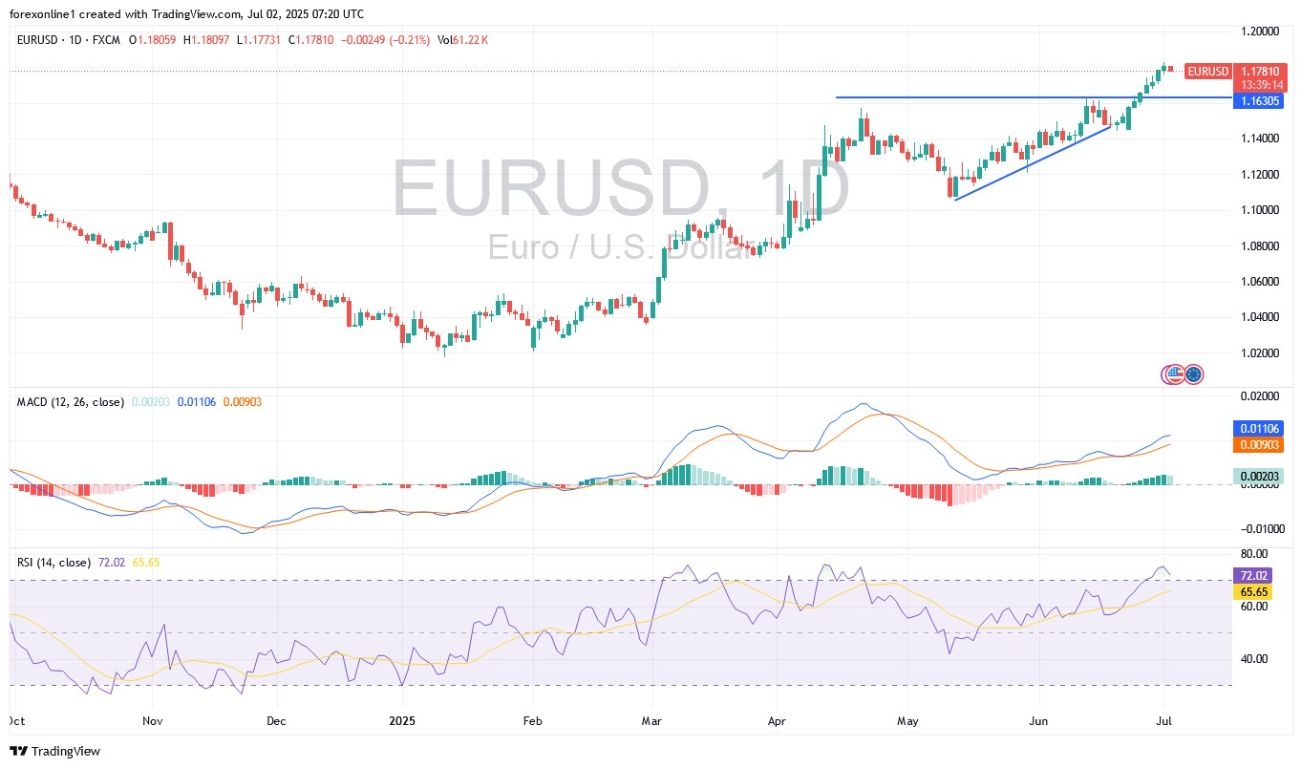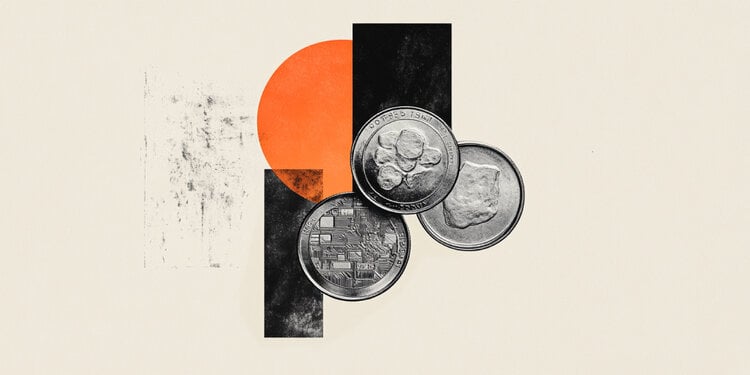Category: Forex News
Newsquawk Week Ahead: US CPI & Retail Sales, UK GDP & Jobs data and Japan Rengo 1st tally
Week Ahead 11-15th March
- Sat: Chinese Inflation (Feb)
- Sun: Japanese GDP (R)
- Mon: Eurogroup Meeting; Norwegian CPI (Feb)
- Tue: NBH Announcement, EIA STEO, OPEC OMR; UK Labour Market Report (Jan/Feb), US CPI (Feb)
- Wed: UK GDP (Jan)
- Thu: IEA OMR; Swedish CPIF (Feb), US PPI (Feb) and Retail Sales (Feb)
- Fri: Quad Witching, PBoC MLF, Japan’s Rengo (labour union) 1st Pay Tally; US UoM Prelim (Mar),
Note: Previews are listed in day order
Chinese Inflation (Sat):
Global markets will be closed during the release of the latest Chinese inflation data, but nonetheless China is expected to come out of its consumer deflationary trend with the Y/Y CPI expected at +0.3% (prev. -0.8%) and the M/M at +0.7% (prev. +0.3%). PPI is expected to remain in deflation at -2.5% Y/Y (prev. -2.5%). The data will be watched to gauge demand in the world’s second-largest economy. Using the latest Caixin PMI commentary as a proxy, the release suggested that “Cost pressures at the composite level picked up, but were mild overall, while prices charged by Chinese companies rose only marginally”, and the “pressure of low prices was more evident in manufacturing”. Data last month marked the fourth consecutive month of declines in consumer prices, as well as the sharpest drop since September 2009, with food prices causing the largest drag – in part due to a 17% slide in port prices coupled with a 12.7% fall in Fresh Vegetables. The inflation release also follows the recent CPCC Two-Sessions in which several economic targets were released, with the CPI target maintained at “around 3%”.
Japanese Revised GDP (Sun):
Although the metrics are revisions, all data will be watched by the BoJ heading into the March 19th confab. Current forecasts see Q4 GDP Q/Q revised higher to +0.3% from -0.1%, with the Q/Q annualised seen at +1.1% from -0.4%. Desks point the revision higher to better-than-expected activity data in December. The data comes at a time when hawkish calls are growing for the world’s most dovish G10 bank. Analysts at ING highlight that the GDP revision could be an “important development as it could give the Bank of Japan more confidence in the economic recovery.” It’s also worth noting that the first pay tally from the Rengo Trade Union Confederation (Japan’s largest labour organisation) is due on March 15th as part of the annual “shuntō” wage negotiations.
Norwegian CPI (Mon):
Core inflation (CPI-ATE), the Norges Bank’s main measure, is forecast by SEB to come in at 5.4% Y/Y (prev. 5.3%) slightly below the Norges Bank’s own expectation of 5.5%. An incremental acceleration from the prior shouldn’t cause any significant deviation from the downward trend in prices, though services remain the component to watch for signs of any acceleration. The February figures come before the March 21st meeting where market expectations ascribe just over a 90% chance of no-change with the remainder pointing to a cut. In January, the Norges Bank kept rates unchanged and guided them to remain at 4.50% “for some time ahead”. As a reminder, the January numbers were slightly firmer than expected and sparked some very marginal strength in the NOK at the time.
UK Labour Market Report (Tue):
Expectations are for the unemployment rate in the 3M period to January to hold steady at 3.8% with no consensus published yet for the other metrics. The prior release saw a decline in wage growth on both a headline and an ex-bonus basis. Analysts at Investec caution that significant reliability issues remain for the labour market data given low survey response rates, whilst also making the observation that it is “quite remarkable” that unemployment fell in the three-month period to December despite the UK being in a recession during H2. This time around, the desk expects a marginal uptick in the unemployment rate to 3.9% driven by an uptick in the participation rate. On the wages front, Investec “have pencilled in a continued moderation in monthly wage growth”, however, it expects that annual pay growth will remain elevated at +5.7% 3M/YY with the ex-bonus at +6.2%. From a policy perspective, the first 25bps rate cut is near-enough fully priced in by the time of the August meeting with a total of 61bps of easing by year-end. An out-of-consensus release could have some sway on market pricing. However, the extent of any repricing will be limited by the wish of policymakers seeing further progress on services inflation.
US CPI (Tue):
The rate of headline CPI is expected to rise +0.4% M/M in February (prev. +0.3%), while the core rate of inflation is expected to rise +0.3% M/M (prev. +0.4%). Traders upped hawkish bets on the expected path for policy rates following January’s pick-up in CPI and will look to the February data to help refine expectations of when the Fed is likely to cut rates. Currently, the market has discounted the prospects of three rate cuts this year and assigns a decent probability of a fourth. Policymakers have been looking through a single months’ data, and are focussed on recent trend rates; in January, the rate of 3-month annualised core CPI rose to 3.9% (from 3.3%), while the 6-month annualised rate rose to 3.5% (from 3.2%). Fed Chair Powell this week told lawmakers that while inflation remains above 2%, it has eased substantially of late. Still, Powell stated that it would not be appropriate to reduce the policy rate until policymakers had greater confidence that inflation was moving sustainably towards 2%, adding that they were not looking for inflation to move all the way down to 2%, instead, the sustainability of the move was more important in assessing the outlook. He also said that the Fed was not looking for ‘better’ inflation readings than we have had recently, but was looking for more of what we have seen.
UK GDP (Wed):
Expectations are for a 0.2% expansion in M/M GDP for January vs. the 0.1% contraction seen in December. The December release saw a 0.1% M/M contraction vs. the 0.2% expansion in November with the monthly data coinciding with the Q4 metrics which showed the UK entered into a technical recession at the end of 2024. For the upcoming report, Pantheon Macro is of the view that the January data will show the UK “leaving last year’s minor recession firmly behind”. The consultancy adds that the 3.4% jump in January retail sales will explain “almost all” of the 0.2% M/M expansion it expects for the January data. Furthermore, Pantheon is of the view that strength in the upcoming release will not be a “flash in the pan” given that PMI data has continued to recover since October with the February composite metric of 53.0 consistent with 0.25% Q/Q growth. From a policy perspective, a favourable release will likely put the UK on track to exceed the BoE’s mild 0.1% forecast for Q1 Q/Q GDP. However, it is unlikely to shift market pricing materially given the Bank’s ongoing focus on real wages and services inflation.
Swedish CPIF (Thu):
January’s headline CPIF Y/Y climbed slightly more than forecast while the ex-energy metric printed at 4.4% declining 0.1pp more than the Riksbank had forecast from the 5.3% prior. At the February MPU, the Riksbank placed significant emphasis on the need to see inflation stabilising near the target before being able to cut, while stating that a H1-2024 policy reduction “cannot be ruled out”. Expectations for the 26th March MPR (new format) imply just a 10% chance of a cut, justified by the view that it is unlikely the Riksbank would elect to ease at its first opportunity to provide fresh forecasts and in light of Jansson’s remarks in the minutes. However, assuming inflation continues to moderate and print roughly in line with expectations, a May cut remains possible with around a 60% implied probability. Thereafter, June is fully priced and has 31bps of easing currently implied. Overall, the February CPIF print will be used to frame whether a May or June cut is more likely, though the March forecasts and timelier data by that point will draw greater focus.
US Retail Sales (Thu):
US retail sales are expected to rise +0.3% M/M (prev. -0.8%), and the ex-autos measure is seen rising +0.3% M/M too (prev. -0.6%). Bank of America’s Consumer Checkpoint update for February notes that weather conditions were largely to blame for the weakness in January, but where the weather was better, spending was resilient, and in the later part of January, total card spending per household rebounded across the country. The bank notes that while consumer confidence has rebounded recently, it remains relatively weak given the consumer has been resilient over the last year and the labour market has been solid, likely a result of ‘sticker shock’ from higher prices. But ahead, BofA says that “as the rate of inflation comes down, this sticker shock should begin to fade, particularly as after-tax wages and salaries growth remains healthy for low and middle-income households in our data,” adding that “consumers’ savings buffers remain elevated and shows no significant sign that people are tapping into their longer-term retirement savings.”
PBoC MLF (Fri):
The PBoC will conduct its Medium-term Lending Facility operation next Friday with the central bank likely to maintain the 1-year MLF rate at the current level of 2.50%. As a reminder, the PBoC unsurprisingly kept its 1-year MLF rate unchanged last month during a CNY 500bln operation vs CNY 499bln of MLF loans maturing to “maintain banking system liquidity reasonably ample”. Furthermore, the central bank’s unwillingness to adjust its shorter-term funding rates is evident in the lack of adjustment to the 7-day reverse repo rate since August last year, while the central bank also surprised markets last month with its benchmark Loan Prime Rates in which it maintained the 1-year LPR at 3.45% (exp. 5bps cut), but delivered a deeper than anticipated cut for the 5-year LPR which was lowered by 25bps to 3.95% (exp. 10bps reduction), with the latter the reference rate for mortgages in China. This was viewed as a targeted measure to support China’s troubled property sector alongside the various efforts that had previously been announced to revive demand in the industry which has been in a crisis since 2020 and was once a key driver of the country’s economic growth. Furthermore, the central bank has continued to signal future action as PBoC Governor Pan recently noted that the PBoC still has sufficient room for monetary policy and that there is still room for cutting RRR. Analysis at ING suggests “Given that the tone on monetary policy at the Two Sessions was kept unchanged – continuing to highlight “prudent monetary policy” – the probability of a cut next week has fallen somewhat.”
Japan Rengo First Tally (Fri):
Wage negotiations will be closely scrutinised by the BoJ for guidance on when to exit its negative interest rate policy, with the Rengo Trade Union Confederation’s first tally (Japan’s largest labour organisation) arguably the most watched event in the upcoming week. The talks are part of the annual “shuntō” wage talks, with preliminary reports suggesting Rengo’s wage demand this year is at 5.85% (4.49% in 2023) – exceeding 5.0% for the first occasion in 30 years. Rengo President Yoshino told a news conference Thursday that the requests by the unions were amid several factors including inflation, personnel shortages and a recovery in corporate earnings. In terms of the BoJ, recent sources via Bloomberg suggested the BoJ is said to have differing views among members on the timing of a rate move, whilst officials are said to get more confidence about stronger wage growth. Sources added that there is no consensus yet on whether the central bank should move at the end of its policy meeting on March 19th or wait until April, whilst members see pay increases outpacing last year’s gains. BoJ Governor Ueda said the bank will consider rolling back the massive stimulus programme once the positive cycle of wages and inflation is confirmed, while board member Nakagawa said they don’t necessarily need to wait for all of small, mid-sized firms’ wage talks outcomes in deciding when to end negative rates. It’s important to ensure wages keep rising as a trend and sustain inflation around 2%. The latest sources via JiJi suggested the BoJ is considering a new quantitative monetary policy framework, although details are light.
This article originally appeared on Newsquawk.
Source link
Written by : Editorial team of BIPNs
Main team of content of bipns.com. Any type of content should be approved by us.
Share this article:







